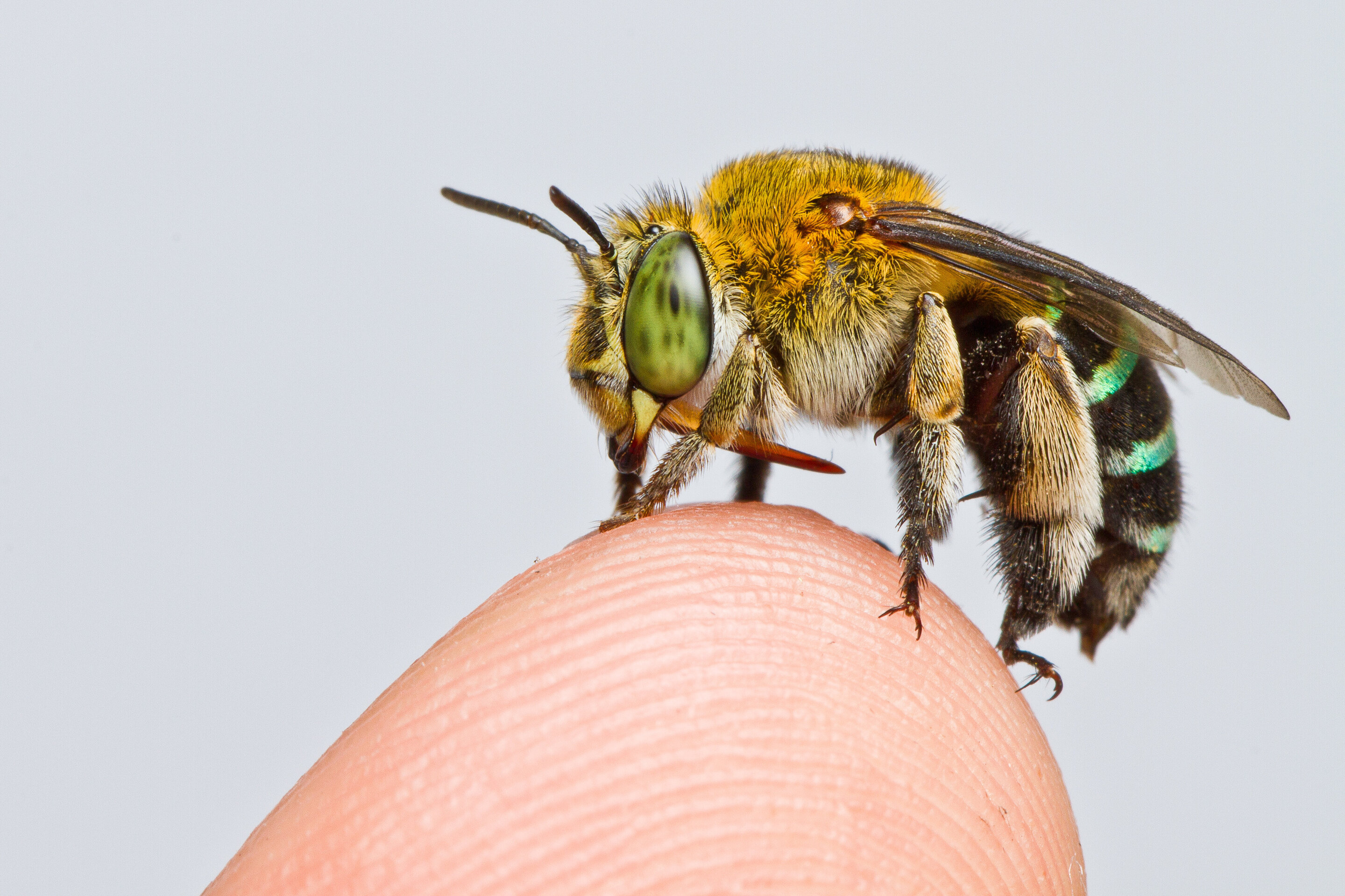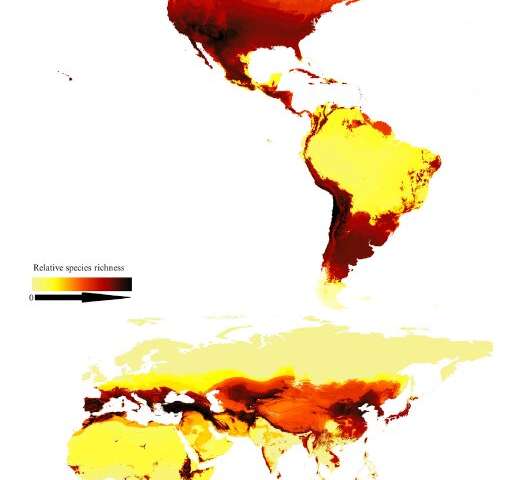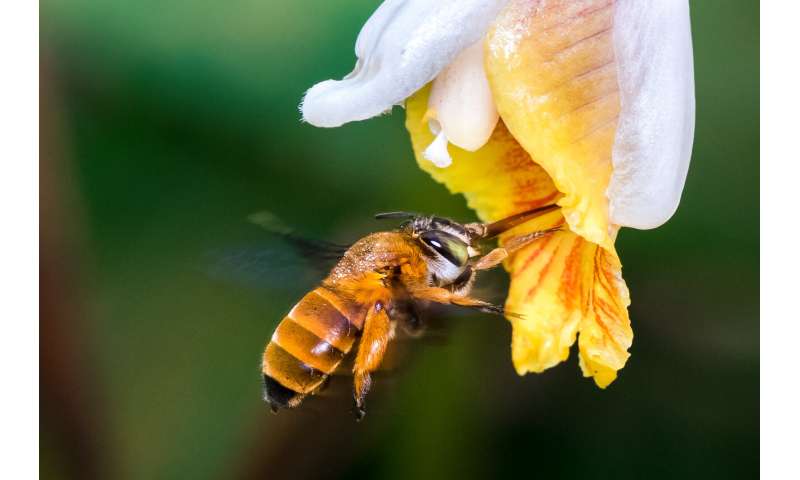
[ad_1]

The bee species Amegilla andrewsi, one of 20,000 species in the world. Credit: Zestin Soh
There are over 20,000 species of bees, but precise data on how these species are distributed around the world is scarce. However, researchers reporting in the journal Current biology on November 19, created a bee diversity map by combining the world’s most comprehensive checklist of known bee species with nearly 6 million additional public records showing where individual species have appeared in the world. The team’s results confirm that there are more bee species in the northern hemisphere than in the south and more in arid and temperate environments than in the tropics.
“People think bees are just honey bees, bumblebees and maybe a few others, but there are more species of bees than birds and mammals put together,” says lead author John Ascher, Assistant Professor of Biological Sciences at the National University. from Singapore. “The United States has by far the most bee species, but there are also large areas of the African continent and the Middle East that have high levels of undiscovered diversity, more than in the tropics. “
Many plants and animals follow a pattern, known as the latitudinal gradient, where diversity increases towards the tropics and decreases towards the poles. Bees are an exception to this rule, having more species concentrated far from the poles and less near the equator, a pattern known as the bimodal latitudinal gradient. There are far fewer bee species in forests and jungles than in arid desert environments, as trees tend to provide less food sources for bees than low plants and flowers.
“When it rains in the desert, there are these massive unpredictable blooms that can literally cover the entire region,” says first author Michael Orr, postdoctoral fellow at the Institute of Zoology, Chinese Academy of Sciences. “There is a much higher turnover rate in the desert due to the uneven distribution of resources year after year. So there is a lot of potential for new species there.

This map shows the relative specific richness of bees modeled in the world and represents the bimodal latitudinal gradient. Darker areas have more species. Credit: Orr et al./Current Biology
To create their maps, Ascher, Orr, Hughes and their colleagues compared data on the presence of individual bee species with a massive checklist of over 20,000 species compiled by Dr Ascher and available online at the DiscoverLife.org biodiversity portal. Crossing multiple datasets with complementary coverage gave a much clearer picture of how the many bee species are distributed across different geographies. This is an important first step in assessing the distribution and potential decline of bee populations.
“We’re extremely interested in bee abundance, but it’s something that needs to be done against a baseline,” Ascher says, “we’re trying to establish that baseline. We really can’t interpret abundance until we understand species. wealth and geographic models. “
While some of these models had been hypothesized by previous researchers such as Charles Michener, they were difficult to prove due to inaccurate, incomplete, or difficult to access data. The “cleaning” of this data has been a major obstacle for the researchers.
“I was surprised at how terrible much of the previous global data really was on bee diversity,” says Alice Hughes, associate professor of conservation biology at Xishuangbanna Tropical Botanical Garden, Chinese Academy of Sciences and other author of the article. “A lot of the data was simply too fragmentary or too focused on a small number of countries that prioritized data sharing to be able to use these resources for any large-scale analysis.”

A bee of the species Amegilla insularis pollinating a flower. Credit: Zestin Soh
While there is still much to learn about what drives bee diversity, the research team hopes their work will help conserve bees as global pollinators.
“Many cultures, especially in developing countries, rely on native bee species and not on honeybees,” says Hughes. “There is not enough data about them, and providing a reasonable baseline and analyzing it in a reasonable way is essential if we are to maintain both biodiversity and the services these species provide to them. the future.”
The authors see this research as an important first step towards a more complete understanding of global bee diversity and an important baseline for future and more detailed bee research.
As native mid-Atlantic bee populations decline, exotic species proliferate
Current biology, Orr et al .: “Global models and drivers of bee distribution” www.cell.com/current-biology/f… 0960-9822 (20) 31596-7, DOI: 10.1016 / j.cub.2020.10.053
Quote: Researchers create the world’s first bee species map (November 19, 2020) retrieved November 19, 2020 from https://phys.org/news/2020-11-bee-species-globe.html
This document is subject to copyright. Other than fair use for study or private research, no part may be reproduced without written permission. The content is provided for information only.
[ad_2]
Source link